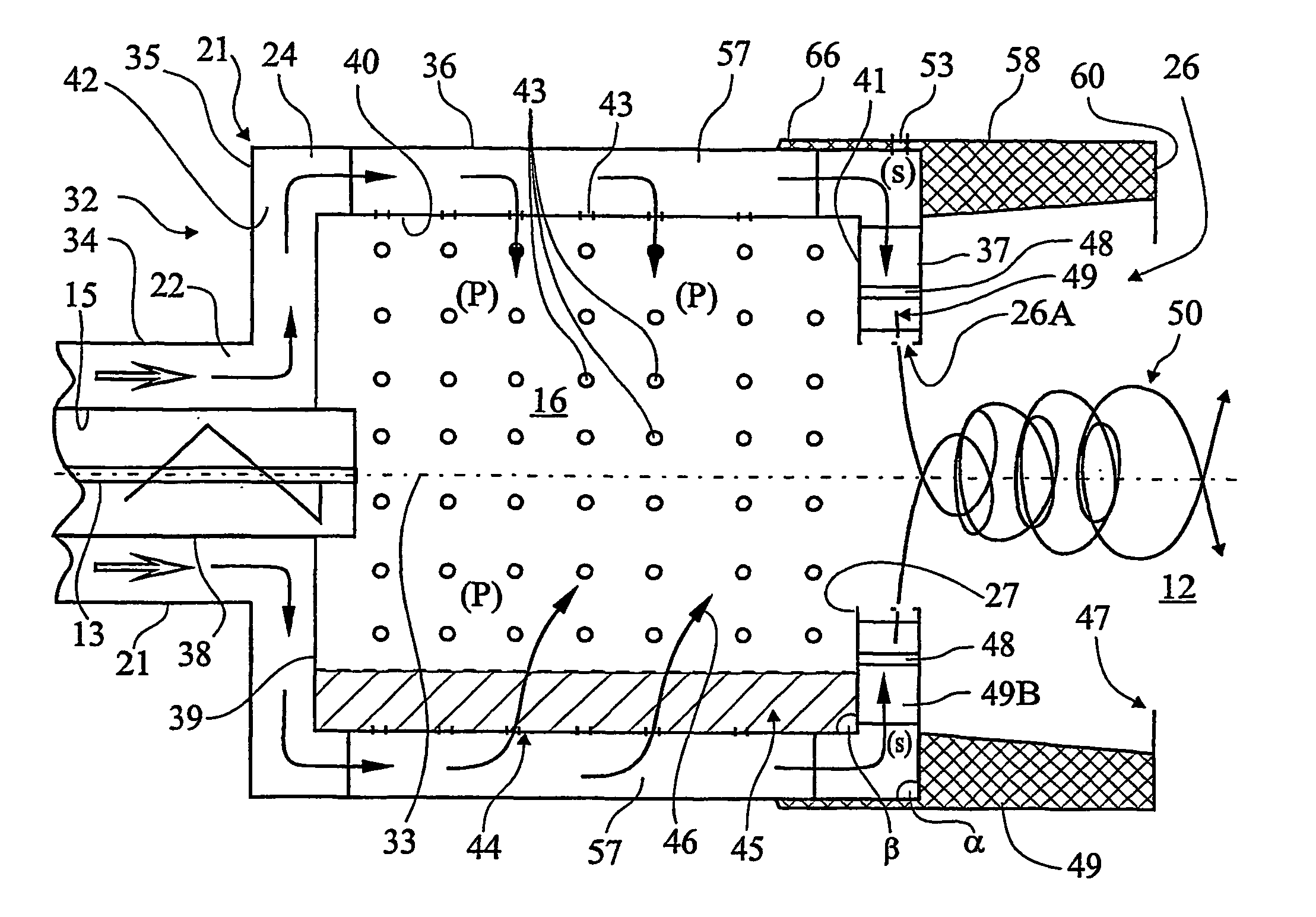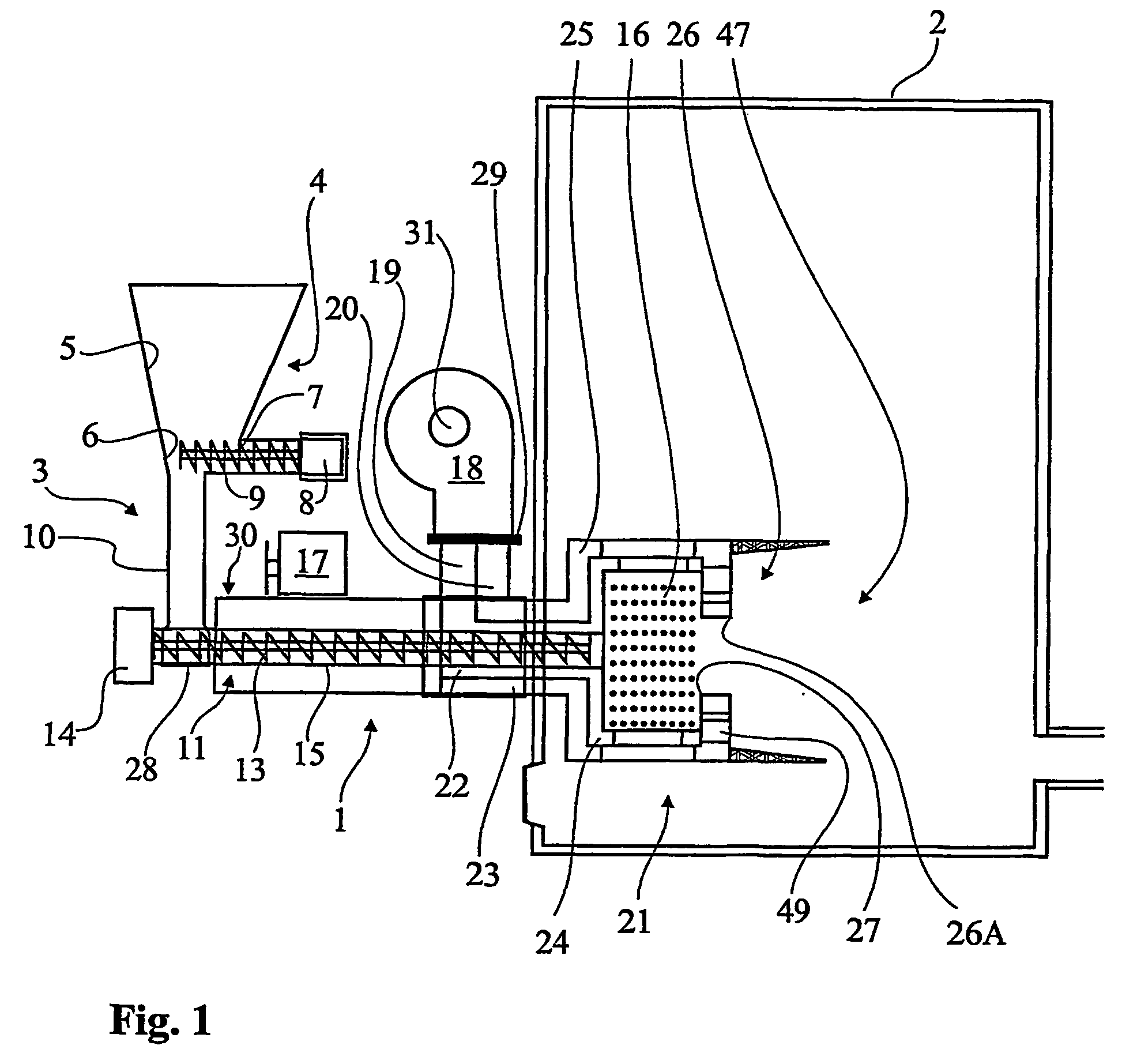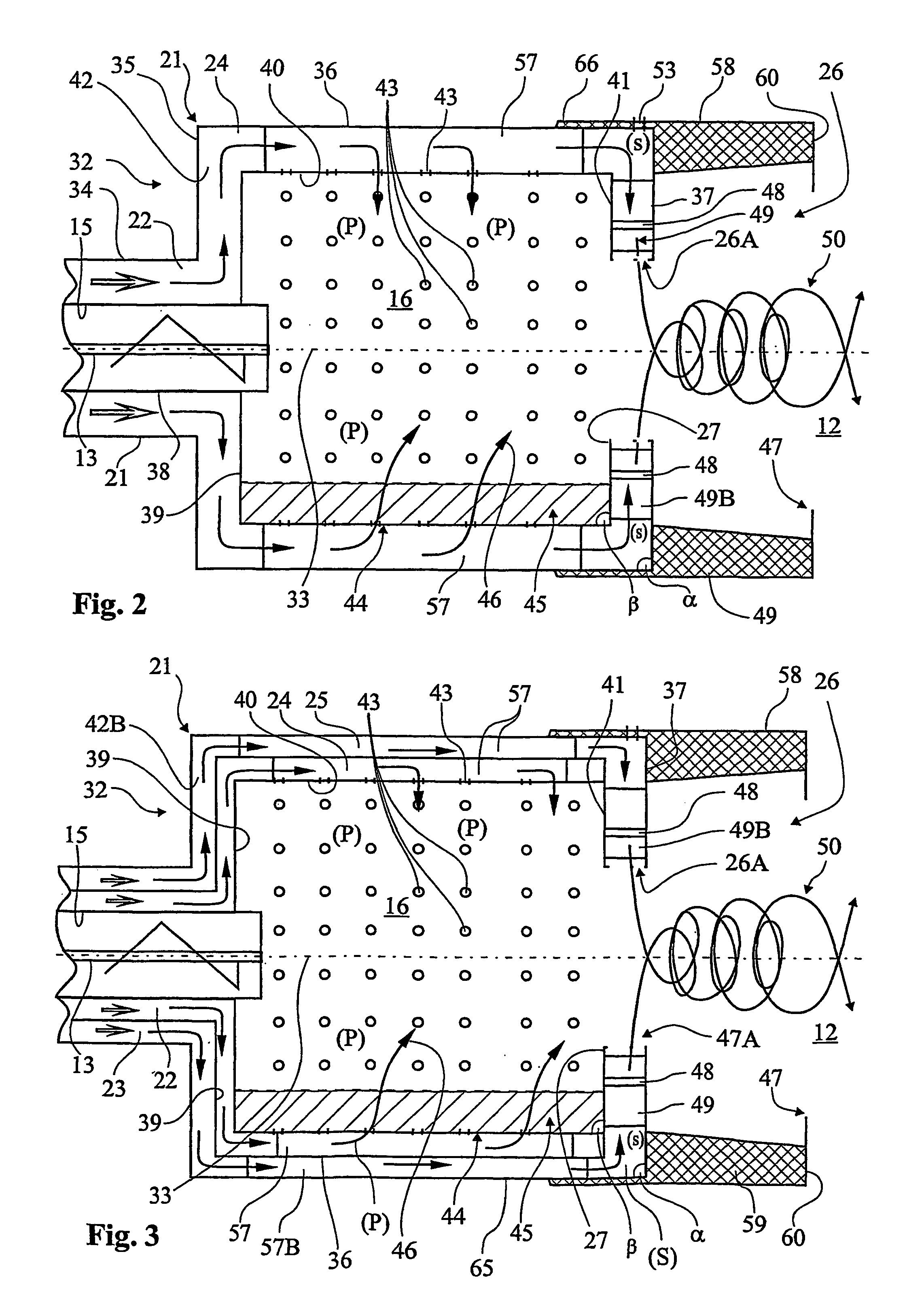Combustion device
a combustion device and combustion chamber technology, applied in the direction of combustion process, lighting and heating apparatus, combustion types, etc., can solve the problems of uneven combustion of fuel, obstructing the air inlet opening, and difficult to obtain complete combustion of fuel to secondary combustion gases, etc., to achieve simple design construction, reduce the effect of obstructing the air inlet opening, and reducing the number of parts
- Summary
- Abstract
- Description
- Claims
- Application Information
AI Technical Summary
Problems solved by technology
Method used
Image
Examples
first embodiment
[0049]In the first embodiment, see FIG. 2, the combustion part 21 of the combustion arrangement 1 comprises the combustion chamber 16, the secondary air distributor 26A, the secondary combustion chamber 26, the fuel feed pipe 15 with the screw conveyor 13, just one common air inlet pipe 22 for both primary air (P) and secondary air (S), the air inlet pipe 22 surrounding the fuel feed pipe 15, and just one, that is to say a common chamber 24, which surrounds the combustion chamber 16, for the delivery of primary air (P) to the combustion chamber 16 and for the delivery of secondary air (S) via the secondary air distributor 26A to the secondary combustion chamber 26, furthest away from the combustion arrangement 1.
[0050]The fuel feed pipe 15, the combustion chamber 16, the secondary combustion chamber 26, the air inlet pipe 22 and the air chamber 24 preferably have an essentially circular cross-section, see FIG. 4, and the said parts 15, 16, 22, 24 are all arranged concentrically in r...
second embodiment
[0057]In the second embodiment, see FIG. 3, the combustion part 21 of the combustion arrangement 1 comprises a further two circular cylindrical and double-walled drums 23, 25. The drums 23, 25 are arranged concentrically in tandem on the outside of the air inlet pipe 22 and the air ducts or the air chamber 24 with a second, double-walled, radially circular space 42B arranged around air the inlet pipe 22, this space constituting a first part of the air chamber 25. The space 42B extends radially outwards from the said air inlet pipe 23 and connects with this pipe 23 for an even distribution of the secondary air (S) along the entire rear wall 35 of the air chamber 24. The drums 23, 25 are designed to form an outer air inlet pipe 23 and outer air ducts or air chamber 25 for delivery of secondary air (S) to the secondary combustion chamber 26 via secondary air inlet openings 48 in the secondary air distributor 26A, whilst only primary air (P) is delivered to the combustion chamber 16 via...
PUM
 Login to view more
Login to view more Abstract
Description
Claims
Application Information
 Login to view more
Login to view more - R&D Engineer
- R&D Manager
- IP Professional
- Industry Leading Data Capabilities
- Powerful AI technology
- Patent DNA Extraction
Browse by: Latest US Patents, China's latest patents, Technical Efficacy Thesaurus, Application Domain, Technology Topic.
© 2024 PatSnap. All rights reserved.Legal|Privacy policy|Modern Slavery Act Transparency Statement|Sitemap



